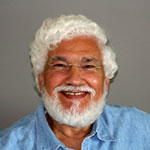June 17, 2012
Eat, pray and love in Indonesia's Bali and Ubud
Julia Roberts' 2010 movie "Eat, Pray, Love" gave Indonesia's Bali beaches and the island town of Ubud a high ranking among the world's most popular competing tourist destinations. The movie was based on Elizabeth Gilbert's 2006 best-selling memoir about Ubud where she spent time seeking traditional spirituality that leads to love. The island of Bali (population 3.2 million) had 2.5 million visitors in the same year of 2010, more than any other year despite the terrorist bombings of 2002 and 2005.
Tourists from all over the world flock to Bali, soaking up the sun, surf, enjoying the food and delighting in Ubud chic spas, shops, all graced by the gentle smiling Balinese. There is the REAL Bali often not seen by holiday makers; it is the inherent unity and co-operative of the community - with every organization, be it agriculture, rice irrigation or the ceremonies of dance and music, every contributing member of family compound and village have a vote in each and every enterprise.
Their religion, represented symbolically in spectacular ceremonies, is in fact their law, a moral philosophy of high spiritual value. The mysterious forces of nature - powerful as they may be - are identified through religious rites, offerings to the Gods, acceptance of good and evil, beauty and a darker side. The delicate sense of the magical can be found by letting go of personal cultural mores and simply feeling the peace of the energetic forces that are so understood by the Balinese - being at one with oneself and the healing powers of nature.
The Bali beaches were fishing villages only 40 years ago, and if you stroll on the beaches now, you may meet some of the retired fishermen walking with their grandchildren. Some other work for sea-front hotels, using cow pulled tools to clean the beaches.
The town of Ubud near the centre of the island, attracting over the years foreign visitors especially Australians, is a must see destination especially for first time visitors to Bali. It is famous as an arts and crafts hub and much of the town and nearby villages seems to consist of artists' workshops and galleries. It has developed rapidly in the last 40 years into a high profile top class international destination, whilst still maintaining its integrity as the centre of Balinese art and culture. You can catch a Balinese musical performed by dancers with bright customs telling traditional mythological stories of the everlasting struggle between good and evil.
The island of Bali lies approximately 8 degrees south of the equator, some 150 km wide and spans approximately 100 km north to south. Bali's volcanic nature has contributed to its exceptional fertility and its mountain ranges provide rainfall that supports the highly productive agriculture sector including Bali's rice fields. Bali was included in the Republic of the United States of Indonesia when the Netherlands, the last of colonizers that included Portages, British and Japanese, recognized Indonesian independence on 29 December 1949.
For 100 years sacred rituals such as the multi-act Barong & Kris dance have been performed both in their original contexts, as well as exclusively for tourists such as the one in Denpasar, Bali’s hectic and ever growing capital with more motorcycles than people, approximately 500,000 of them.
Balinese Hinduism, the religion of over 90% of the population has roots in Indian Hinduism and in Buddhism, and adopted the animistic traditions of the indigenous people. The belief system not only embraces theology, philosophy, and mythology, but ancestor worship and magic. Today - sad but true - the caste system is well and alive and the island’s Hindu priesthood is a family business.
When Islam surpassed Hinduism in the Indonesia’s island of Java in the 16th century, Bali became home for many Hindus. Today the island has over 20,000 temples and shrines, ranging from those which are part of traditional family or extended family houses, to those for public worshiping. As a result Bali is known as the "Island of a Thousand Puras", or "Island of the Gods". Minority religions also exist which include Islam, Christianity, and Buddhism.
The island of Bali was inhabited as early as around 2000 BC. Culturally and linguistically, the Balinese are closely related to the peoples of the Indonesian archipelago, Malaysia, the Philippines, and Oceania. During the Pleistocene ice age the island of Bali was connected to the islands of Java and Sumatra and to the mainland of Asia.
English is a common foreign language of many Balinese, owing to the requirements of the tourism industry. Other foreign languages, such as Chinese, Japanese, Korean, French or German are often used. Many tourists are from Russia despite the far distance. The native language is Balinese and Indonesia’s official language Bahasa Indonesian is widely used.
If shopping is part of your visit to Bali you will find bright color batik shirts for men or sarong for women to be used at the beach. Eating out from 100s of food stalls could be an adventure. The stalls line both sides of many streets or surround a court filled with tables, each offering different dishes at low prices including seafood, meat, chicken, vegetables, soup, noodles or rice.
A walk through Ubud’s Monkey Forest Sanctuary also proves to be fun. It is a very sacred Balinese Hindu site with a Balinese temple. One of the most popular tourist spots in Ubud if you like monkeys, but hold on to your belongings and don't feed them.








